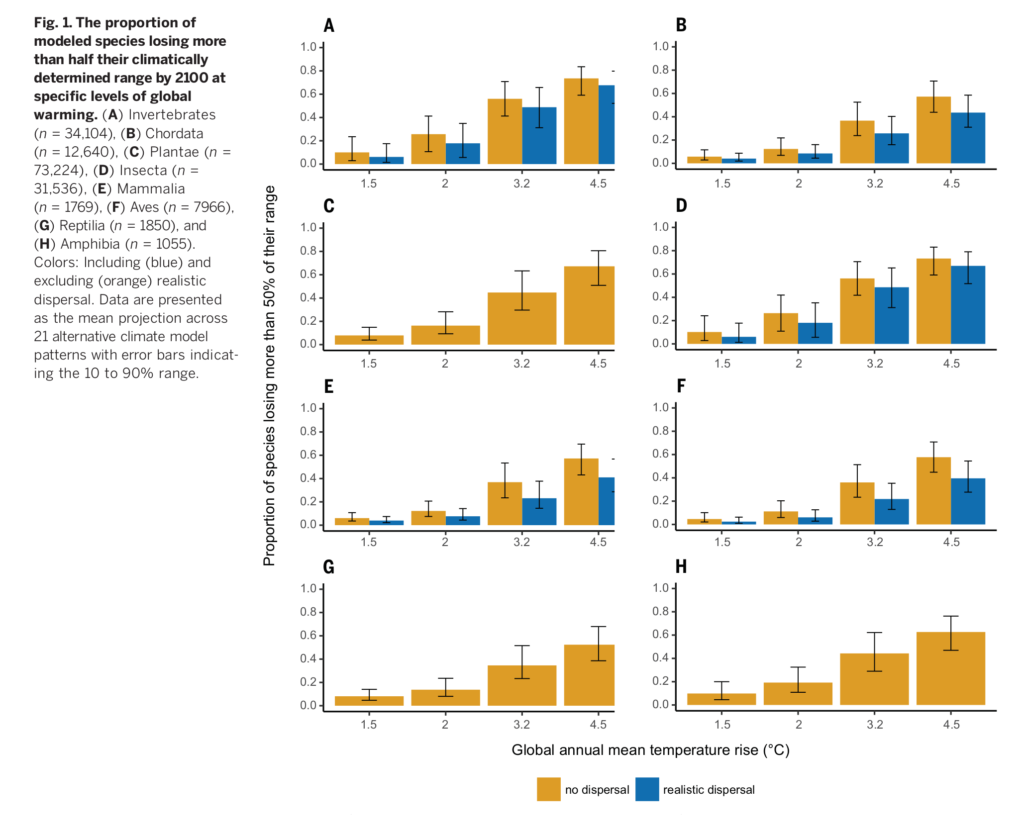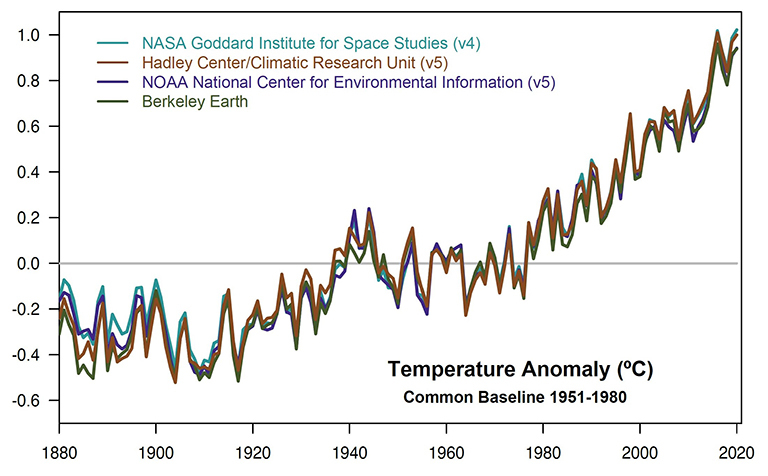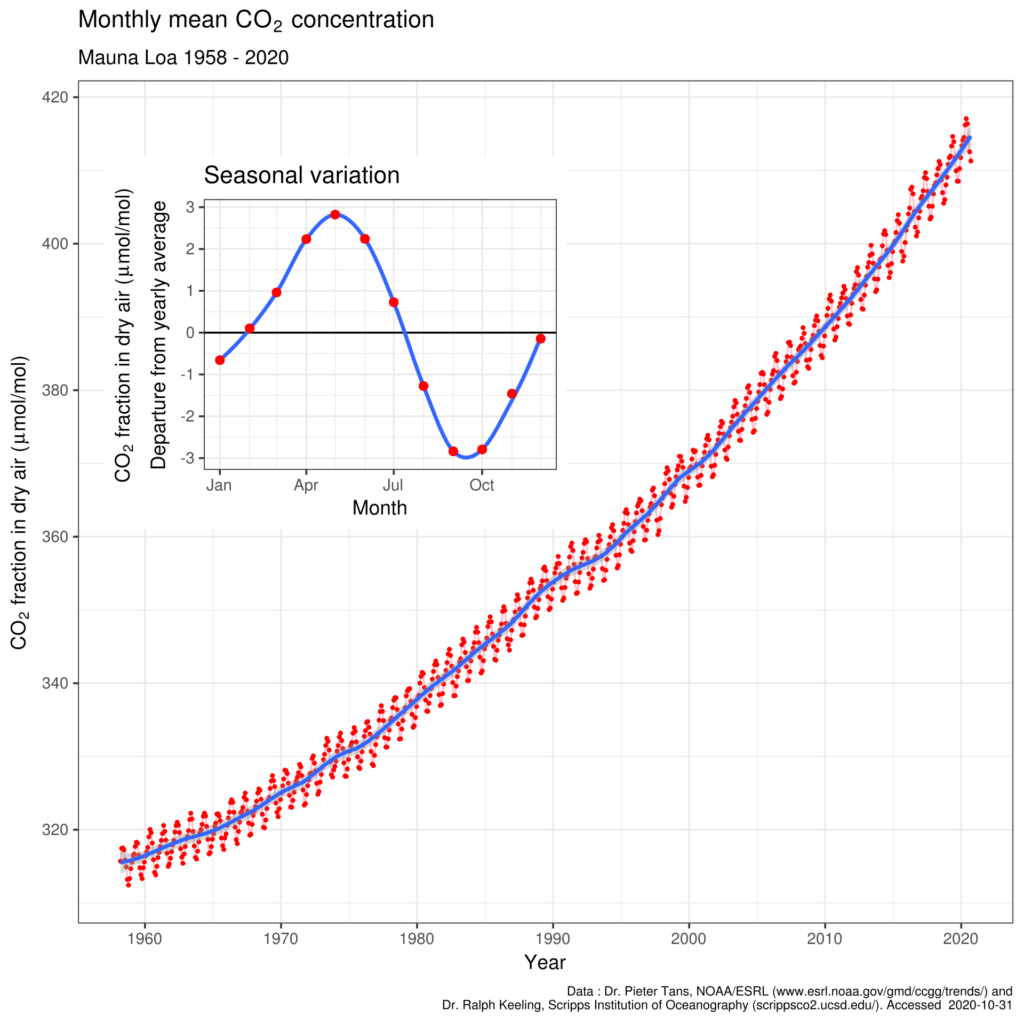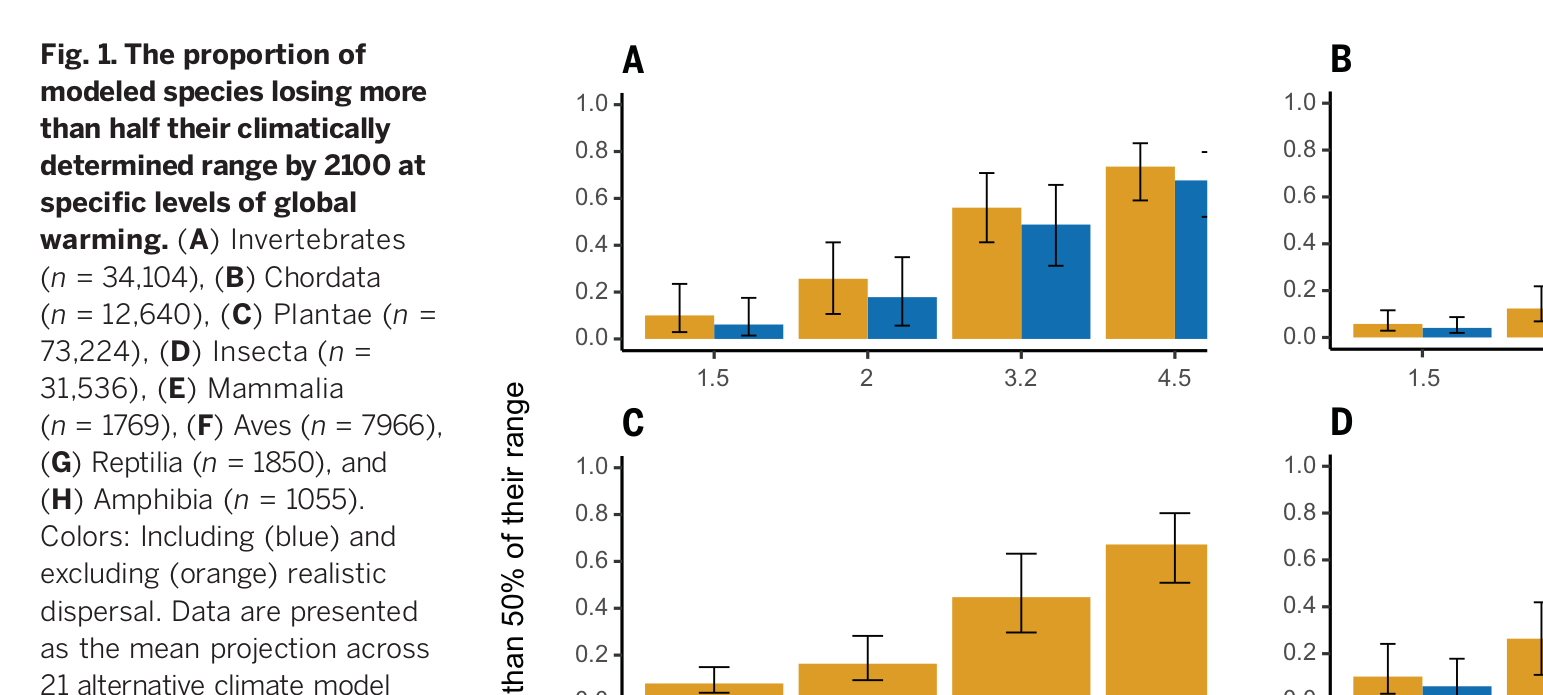science.sciencemag.org/content/360/6390/791

science.sciencemag.org/content/360/6390/791
Figure S6 indicates the projected changes in species richness globally at the four levels of warming (1.5°, 2°, 3.2°, 4.5°C above pre-industrial levels) and, where appropriate, (for animals) including or excluding realistic dispersal.
…
We find substantial benefits to limiting warming to 1.5°C above preindustrial levels as compared with 2°C by 2100. The number of insect species projected to lose >50% of their range is reduced by about 66%, whereas the number of plant and animal species projected to lose more than half their range is reduced by ~50%.
Matt’s note: insects are vital pollinators for agricultural purposes
![]()
More:
climate.nasa.gov/scientific-consensus/

en.m.wikipedia.org/wiki/Carbon_dioxide_in_Earth’s_atmosphere

ICHEC Global climate temperature visualizations
Jan 24, 2020
Click “Free Preview” to learn more


